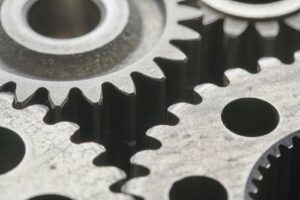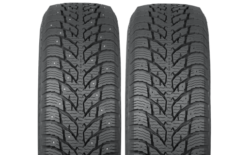
Use our gear ratio calculator to calculate your new gear ratio and rpm. Just type in your tire size, aspect ratio, diameter, old gear ratio and it will calculate it for you. You can also check out our tire size calculator, wheel offset calculator, tire height calculator and tire comparison calculator.
235/35R19
Size: 235
Aspect Ratio: 35
Rim diameter: 19
What is a good gearing ratio?
Maintaining a good gearing ratio depends on your choice. If you are a daily driver, chances are you will want to keep your gear ratio at 3.23 or below for optimal performance and lower cruising RPMs.
For street and strip applications, a popular choice ranges between 3.42s and 3.90s, giving you that extra 00mph on the track while maintaining a tolerable cruising RPM on the street.
The lower the number, the faster the car will go with the same number of engine revolutions. The higher the number the better the car will accelerate but at the expense of high speed cruising.
In general, a taller gear ratio means better fuel mileage and less noise, although you may need to shift down if you need to overtake. The ideal cruising speed is usually around 1600-2000 RPM for diesels and 2000-2500 RPM for petrol engines.
Do bigger tires change gearing ratio?
Changing tire size will ultimately affect the power and drivability of your vehicle. When changing gears for taller tires, you are heading to a numerically higher gear ratio.
Is it better to have a higher or lower gear ratio?
In the real world, typical street machines with aspirations for good drag-strip performance generally run quicker with 4.10:1 gears.
Lower gears are required if the car is very heavy or if the engine makes its power at the upper end of the rpm scale. A high numerical gear ratio is called a low gear or low rear end, and vice versa. Low gears give fast acceleration while high gears give better cruising.
A smaller engine will need a lower rear end to give adequate acceleration and a truck with optional 3.73 gears will tow a heavier trailer than one with 3.55 or 3.21. But it will also use more fuel in all situations because the engine’s rpm will be higher. Making a choice therefore depends on what you want to achieve.
Which gear ratio is faster?
It is the gear ratio that tells us how fast one gear is rotating when compared to another. If our input gear (10 teeth) is rotating at 5 rpms and it is connected to our output gear (50 teeth), our output gear will rotate at 1 rpms, thus our large gear will be said to be rotating at 1/5th of the speed required.
In 4th gear, the gear ratio of 1:1 means that the engine and the transmission’s output rotate at the same speed. 5th and 6th gears are known as overdrive gears, in which the output of the transmission is revolving faster than the engine’s output.



